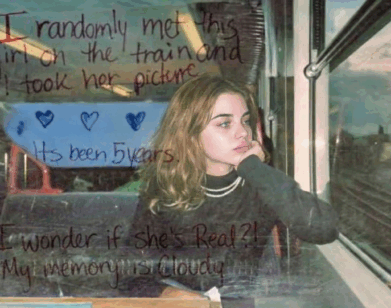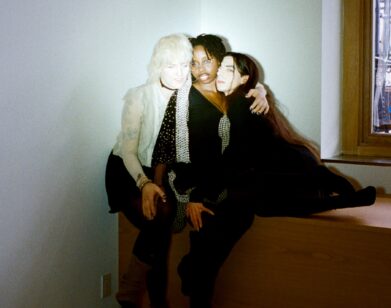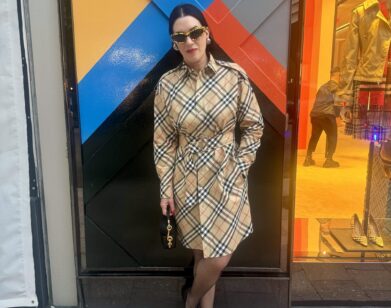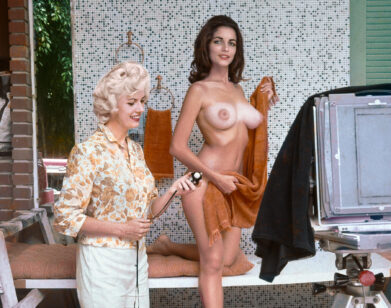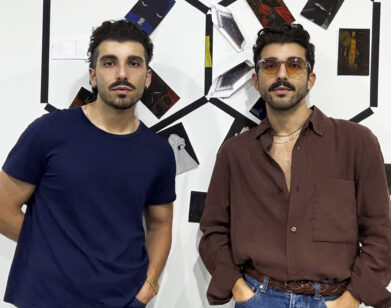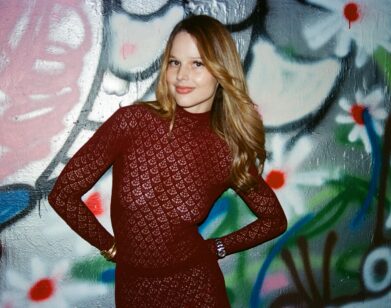Inside the psychedelic mind of artist Jared Madere

‘TELL THE TRUTH’ BY JARED MADERE
L.A.-based artist Jared Madere creates vast, psychedelic works out of materials you’d never expect. For one piece, he filled thousands of tiny bags made from hairnets with raspberries, and pasted them across the interior of a hydropower station in France to depict an orgy of concubines. The piece also makes use of figure skates, trees, nightgowns, shoes, wigs, a moisture barrier, flowers, coat hangers, frozen peas, blood, beaded curtains, nails, strawberries, jewelry, and water. For another sculpture, he built a “trans-dimensional snowman queen” out of cherries and candle-wax. The image at the top of this page consists of a baby recovering from open heart surgery surrounded by a digitally warped cornucopia of fruit and flowers. Madere plays with major keys of euphoria, horror, and abundance. His pieces contain the impact of a Transformers film condensed into a single frame.
Madere—who once turned an RV into a roving exhibition space and parked it outside of the Whitney—has a psychedelic eye for currents of magic within the everyday. His work overflows with detail, overwhelming the mind; he belongs to a loose scene of young artists rejecting tasteful, anesthetized minimalism in favor of electric fantasy and high drama. After living in New York for several years, Madere recently moved to LA in order to start a new gallery called Mother Culture alongside the artist Jake Cruzen. The title of the gallery’s current exhibition reflects their maximalist approach: “EVERYTHING IS MORE THAN ONE THING FUTURE FEEL GOOD.”
“Ecstatic emotional states—period—always appeal to me,” he told me over the phone, “because they obliterate the emotion. When you zoom in on happiness, regret, or any of these things, they’re all made out of the same stuff. From a certain angle, the agony of the suffering is just as funny as the winning of the award, or the crashing of the car, or the finding out you have an STD, or any of it.”
Madere’s work looks futuristic, but you can trace his underlying mission back centuries. “I just like people, and I like their lives,” he enthuses. When Madere presents us with a laughing, vulnerable baby, he’s engaged in the same project as Michelangelo’s Pietà: celebrating the agony, ecstasy, and infinity of the human experience.
EZRA MARCUS: Let’s start with the image of the baby with a heart surgery scar. What does this mean to you?
JARED MADERE: It’s about joy and vulnerability. Any image works on a number of different levels and the thing that I think about with any art object is the level that people are actually paying attention, between how much their focus is actually resting on the thing versus it becoming something in the background. The same way you can have a biblical sculpture sitting out, and for someone who’s very familiar with the bible you can say this is this event and this occurred between these two events and this is the significance of it and for another person it’s, “Oh that’s Jesus.” It begins and ends there! And for another person it’s, “Who’s that long-haired guy and why is he outside while the sun is up as opposed to when the sun is down and he seems to be surrounded by food.” So depending on your level of literacy on what is being depicted, your understanding of it varies dramatically.
I think of these images as being composed to work in that way, so that if you are having a casual interaction with them, i.e. you’re just glancing at them when you’re walking by, things are left with a kind of emotional imprint. I’m not even sure the language to use for it, but obviously there are other things the presence of fruit triggers. Ideas about abundance, or infinity in terms of the kind of cornucopia way, and I guess for me those kinds of images have something to do with potentiality. Those are all of the things that God puts on Earth, you have trees and fruit and water and all of these variations of those things and then you have a point of awareness of being a baby or another entity that’s aware of itself and all of the experience that it’s capable of having, whether those be emotional or otherwise.
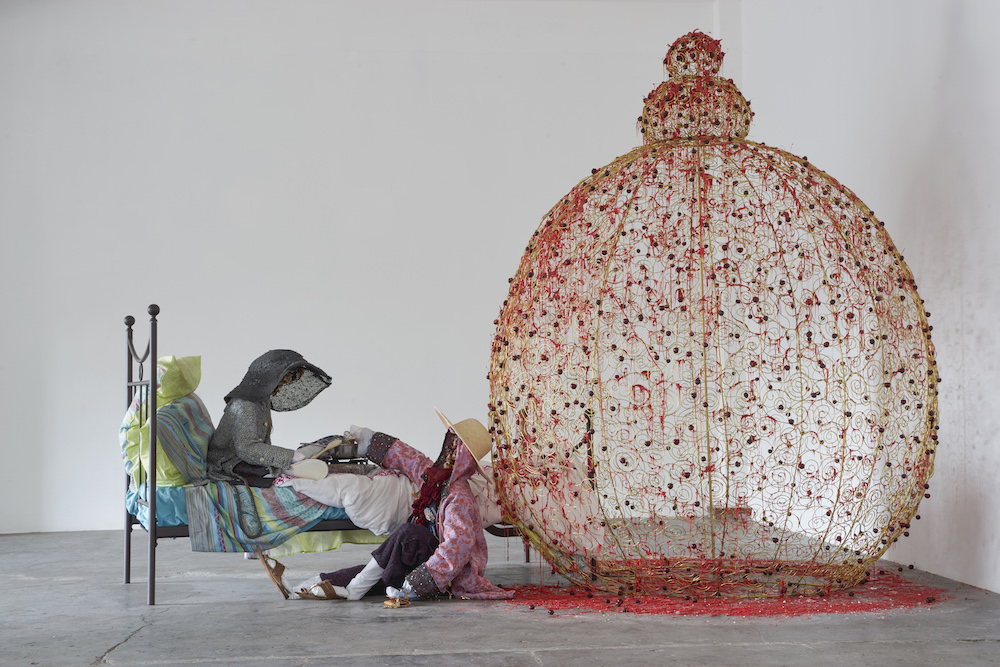
MARCUS: So, tell me about these seated figures.
MADERE: So these are supposed to be like, these future fuckboys walling themselves off in their bedroom, and mixing up some sort of concoction so that they can have a good afternoon. And while this is going on and they’re up in the room with the door locked, there’s a trans-dimensional intersection occurring where this thing—this snowman queen from another realm—is superimposing itself into their corner of reality and they’re merging. The snowman queen is dripping with cherries and red wax.
MARCUS: What do you think fuckboys would even be into in the future?
MADERE: [laughs] I don’t know what that looks like, I also don’t know how anything translates, even over a decade. When I think about the way humor has moved in the last 12 years, I guess I just feel like everything is just so exponentially revving up in every way. Even something as simple as what type of humor was acceptable in the 1990’s, if you look at it, everything has become infinitely more nuanced in a way that it’s hard to imagine how that unfolds over a larger time scale. Like, if you look at the way sarcasm and cynicism were in the early ’90s or even the early 2000s and the types of people who were engaging with those types of humor … I just think of these things as moving into different parts of the stage. In the past being cynical or being sarcastic was borderline subversive orientation and now if you look at a media that is being put out and consumed on a larger scale, the humor that people now find very normal, in the ’90s or early 2000s would be extremely edgy.
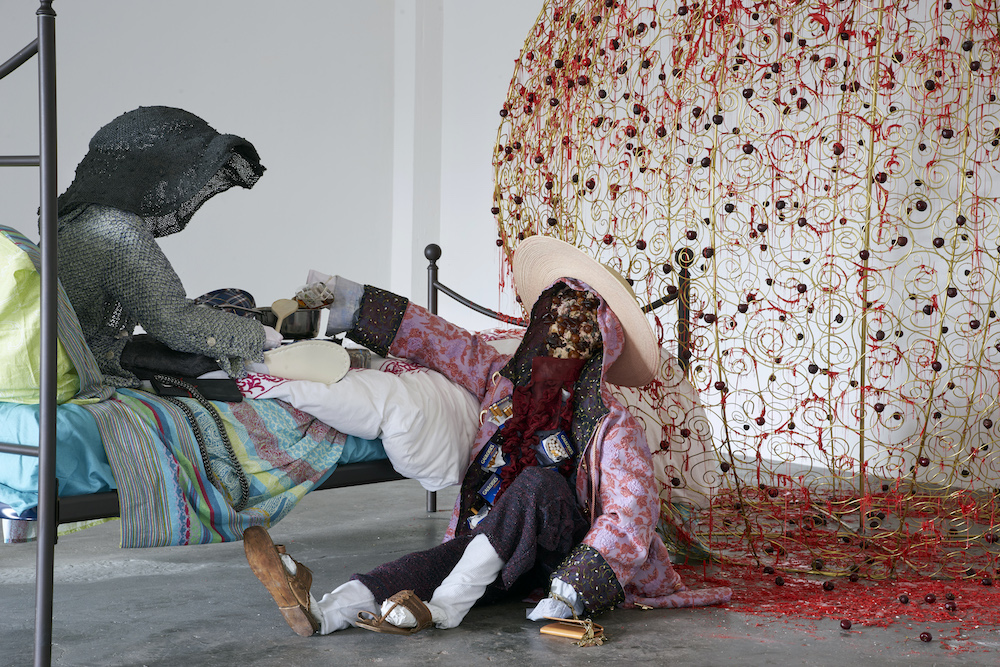
I think the most obvious example of this is the way humor related to being irreverent or humor related to being outright antagonistic. Those ideas have gone a lot further in a post-Jackass world, I think the collective consciousness in the recent past had a lot less to do with like, “Why would you go into that guy’s small business and fuck this guy’s day up so that he has a 6-hour mess to clean up, just so you can jump off a port-a-potty?” But now everyone gets the value in that, versus in the not so distant past a huge part of the population would’ve said, “Oh God, why would you just be an asshole for no reason!” But now our pop stars and politicians and everyone is way more familiar with the temporary pleasures that can be brought about by behaving like a jackass to the people around you.
MARCUS: Do you follow Jake Paul at all?
MADERE: I’m familiar! [laughs]
MARCUS: I’m getting a strong Jake Paul vibe.
MADERE: That’s a very clear representation of this! [laughs]
MARCUS: The tools at the disposal of a teenager who wants to be a free radical nowadays are just massive.
MADERE: The Jake Paul example, that to me is tremendous. It will either become the seed of something that will replace it, or it will become the thing that’s reacted against, and a different attitude will be formed in opposition to that. You can say, “In 50 years young people won’t have the same relationship to culture!” Well, there could be a complete economic collapse and a social reformation set up in such a way that until you’re 35 you’re basically a slave, and maybe that will eliminate the economic influence that people in that age range can have, so that the media that speaks on their behalf goes back to being an underground media phenomenon! Versus today’s climate, where you have all of music and so much of culture being dictated by the cliques of people who aren’t old enough to drive.

‘FEED EVERYONE’ BY JARED MADERE
MARCUS: I’m wondering if you could talk a little bit more about this picture, who is the figure with the hat?
MADERE: The figure with the hat is some sort of elder entity that is bestowing the fruit upon the particularly ecstatic baby. So the idea is that the woman of the hat has swooped in to whatever realm this baby is in and is kind of hovering above these mountains and she has her many-eared friend with her. They’re all kind of presenting this ecstatic baby with this feast.
MARCUS: And the baby is really stoked.
MADERE: The baby is really stoked and doesn’t even know how to contain itself.
MARCUS: Do they have a motive for giving the baby this feast?
MADERE: I’d say something around the lines of spreading ecstasy.
MARCUS: I almost feel like you are the figure with the hat, the dealer.
MADERE: [laughs] I try. That’s very flattering.
MARCUS: Do you kind of see your prerogative as an artist to unleash a a sense of potential energy within your audience? Because I look at this photo of this baby and I think damn, the sky is the limit.
MADERE: That’s definitely the intention! [laughs] Recently it’s become this weird thing that has become really simple for me in some way. Like, the scenes used to unfold along different emotional spectrums, like some of them would really pull on agony and suffering strings and maybe at times that would border on being emotionally manipulative even. But in the recent ones, I’ve had to get really matter-of-fact in my head about it, like, “Okay, what is it you’re doing exactly?” I’m basically making a visual calling card for the world, and by calling card I mean something that you can call upon in your head, meaning you see something and you have a memory stored of it. The best thing to do is bring up something empowering and exciting. So that’s become a weird jumping off point for my work.

MARCUS: Tell me about this vast mural piece.
MADERE: It’s a queen seen outside of time—the queen appears in multiple forms of herself at different ages simultaneously. She gazes over the expanse of a fjord from the balcony of her palace toward three of her concubines going down on each other in a huddle. In front of the mural there are two sitting effigies floating on top of two connected puddle portals—think the flavor of portal where you’re standing in the library in the afternoon light and there is a circle of undulating water on the wall, and you stick your hand through it and on the other side your finger is wiping the snot off a camel’s nose in Libya under moonlight—one figure sits on a toilet giving herself a coat hanger abortion, the other sits in a school chair after she has been punished by being forced to kneel on frozen peas.
EZRA: Woah. So, why do you imagine these characters are doing these things?
MADERE: If you found out a supreme intelligence, or something you really wanted to be welcoming toward, was about to arrive, like if there was an announcement that within 48 hours an alien race was going to make itself known on Earth, imagine the kind of chaos that would pour out of everywhere. Airports would be in shambles, gridlocks on every highway, everyone coming and going, “I wanna go to my mom’s house!” or “I want to go hide at a lake” or “I want to go jump off a cliff.” So in that kind of situation, picture the kind of gestures that people would make to whatever it is that is arriving, and the way those would manifest out of semi-available material—anything at hand that can be cannibalized and converted into material to create this welcome.
The main mural itself, I imagine, is something that potentially a family or a collection of families might make at an airport terminal for something like this, a place that is choked by traffic, a situation where everyone is trying to leave or go somewhere or whatever. This is something that might get created. The way that art objects exist in the world, oftentimes strange things unfold in front of them that aren’t necessarily related to them, so, if you enact something like this in an airport, there’s a lot of dramas that unfold in front of it, just in the lives of everyone who walks past it.
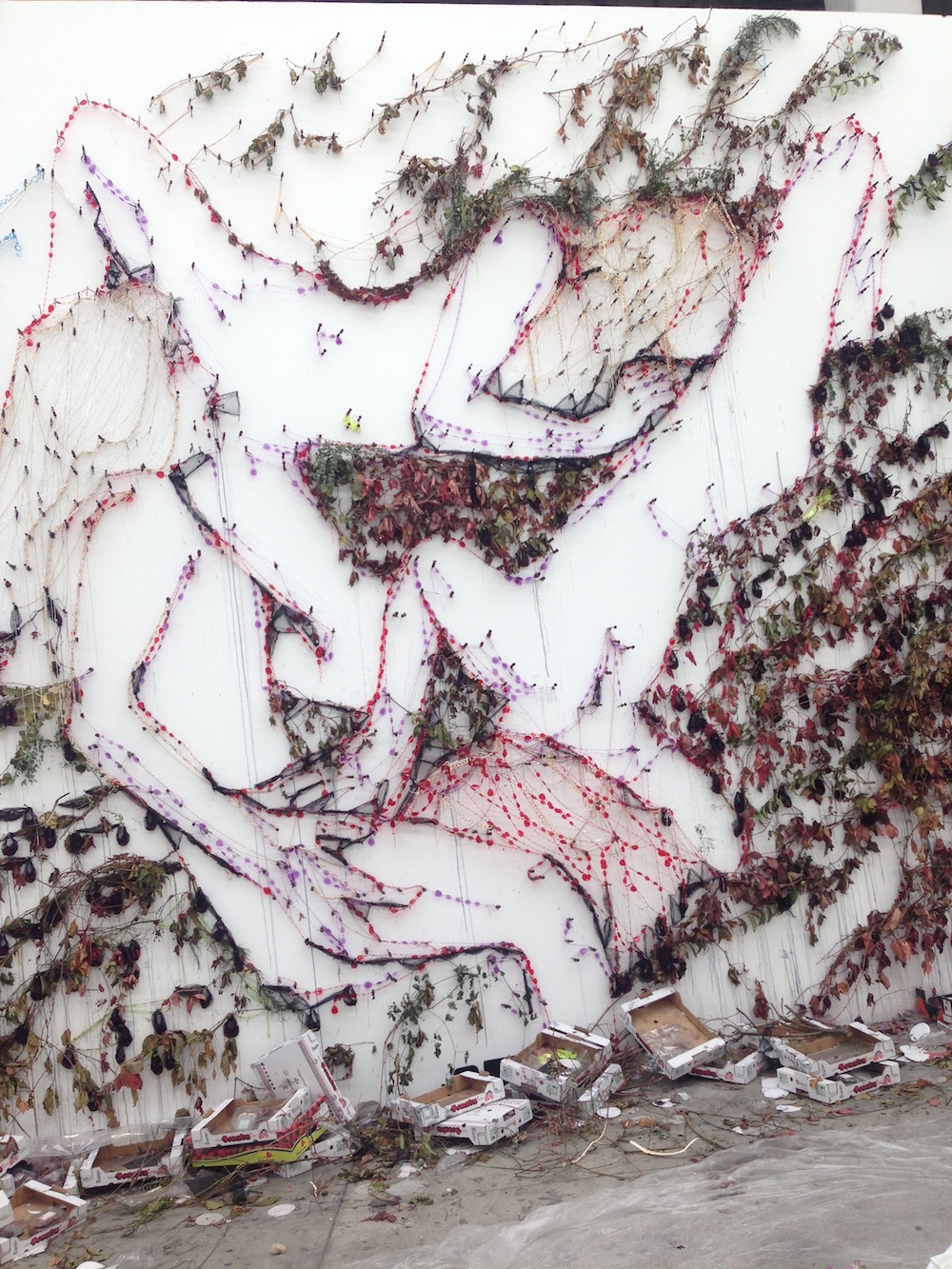
MARCUS: Tell me a little bit about that.
MADERE: Well you know, take any art object that things unfold in proximity to. It could be the statue of Liberty, it could be a piece of graffiti, it could be a public sculpture, it could be a sculpture in your own home, these kinds of dramas unfold in front of these things. You could be standing in front of the statue of Liberty and get a phone call and be informed of XYZ piece of dramatic info, or you could be in the airport in Arizona, and all of these places have these various forms of décor that become the backdrop in these memories or events, and that’s how I’m imagining that relationship between that mural and the figure sitting in front of it.
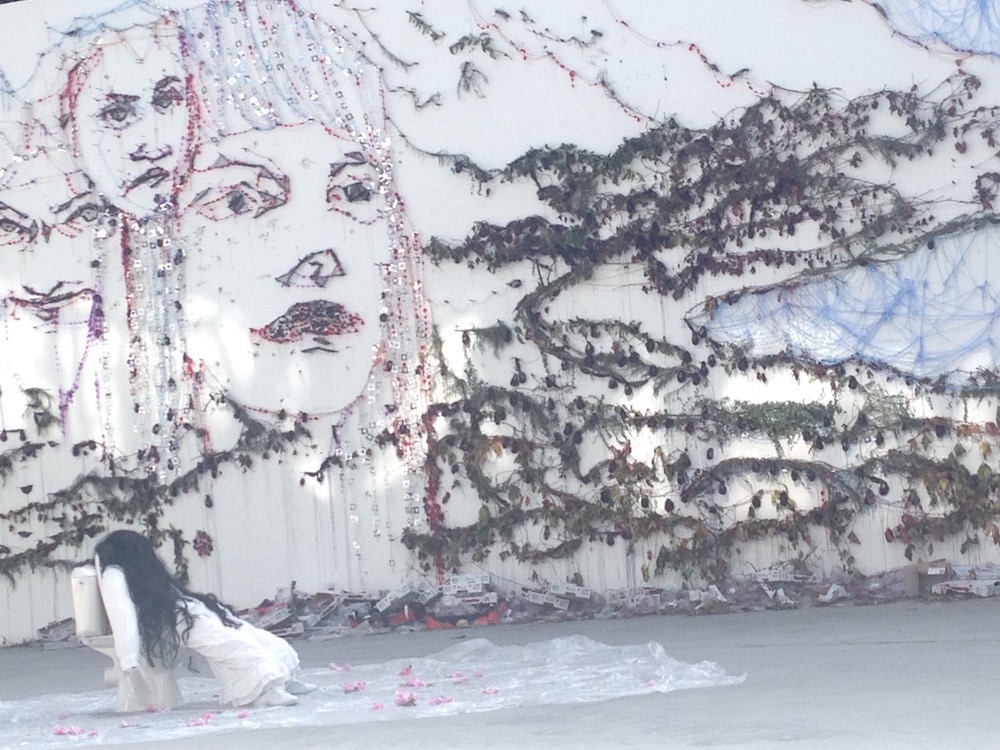
MARCUS: Do you imagine your own pieces in this way, as some kind of vascular part of a larger drama occurring in the lives of the people that own them?
MADERE: That’s it! I used to really fantasize about [my artwork] being the backdrop for a drama, like, people deciding they were going to get a divorce or something like that, and just being the thing that’s up in the background of the room. But now I like to imagine less tumultuous dramas unfolding.
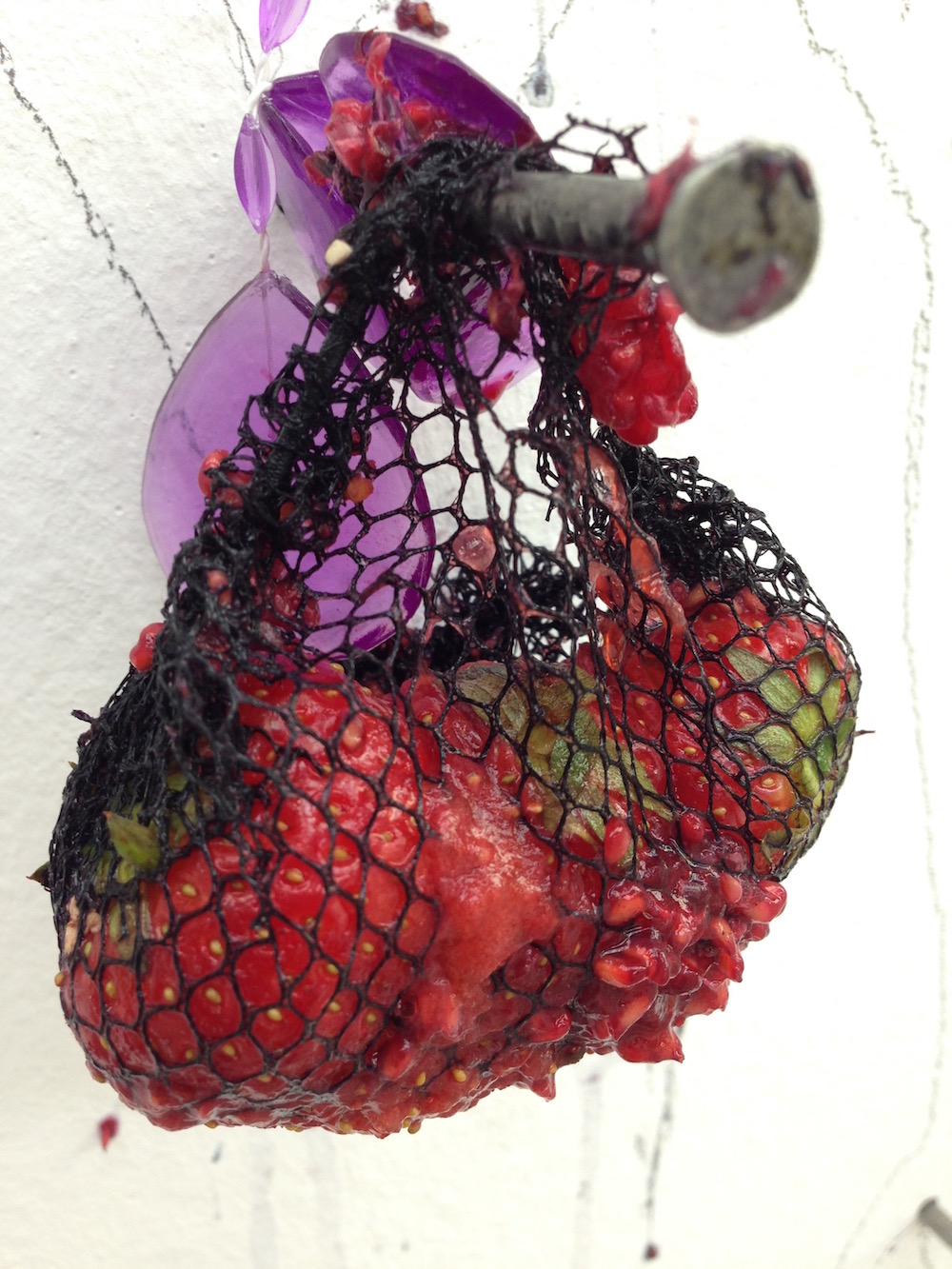
MARCUS: Like, sort of mundane events?
MADERE: Those are fun too, but the ones I like to imagine now are probably more ecstatic than that.
MARCUS: People having sex in front of them?
MADERE: That one’s a good one! They have sex and then there’s a kid, and then the kid has to make a lemonade stand, and he breaks his knee from skateboarding, and all that kind of stuff. I just like people, and I like their lives. I like to think about what lives these things are going to have later on, and what people will or will not assimilate into their lives. For some person it’s going to be, “Oh wow I have this thing on my wall and every time I walk in I think about this!” or “Sometimes when I’m on vacation it pops into my head!” or “Sometimes when I come home and the lights are off and I’m walking to my bedroom I can see fragments of it and I always think about the way XYZ fragment is when it’s isolated.” But then the flipside of that is, like, that person has kids and their friends are like, “Oh god, every time I go to so-and-so’s house they have that weird shit on the wall!” and then that changes to, “Oh, remember when I used to go to Tess’ house and she had that weird shit on the wall? Well now I think this about it!” So to me, the most interesting thing about it is setting up a circumstance where once these things are birthed out into the world, they kind of get to have lives of their own.

